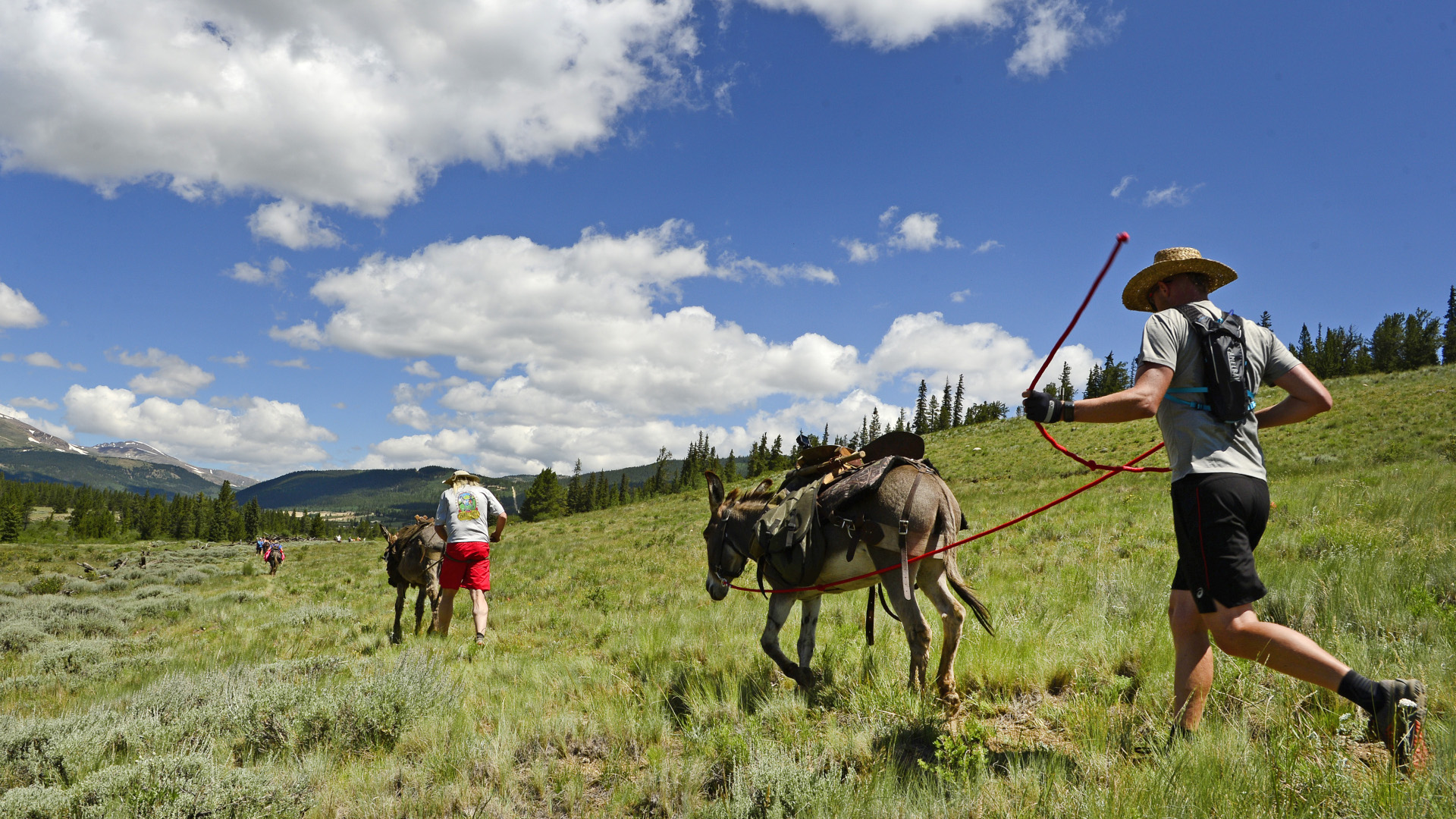Burro racing: Colorado’s most unusual running event
Got a pair of running shoes and a donkey? You might be interested in burro racing, a Colorado mining era tradition

Hauling ass is a regular occurrence in Colorado these days, from the ubiquitous 5k turkey trots on Thanksgiving to grueling events like the Leadville 100 and the Transrockies races that lead ultra-runners across the highest peaks in the state, but burro racing is undoubtedly the state’s most unique running event. If you happen to own a donkey and a pair of the best trail running shoes, you might want to give burro racing a go.
What is burro racing?

Burro is the Spanish word for donkey and burro racing involves a runner leading a donkey on a rope along a predetermined course.
Burro racing, more correctly termed Pack Burro Racing, has its roots in Colorado’s mining heritage. People started mining for gold in Colorado as early as the 1750s and mining was by far the most significant industry here in the 19th century, when the state was a Spanish territory, and throughout the 20th century. In the early days of mining, miners would go prospecting through the mountains of Colorado with a donkey carrying their supplies. Because the donkey was carrying the supplies, the miner would lead the donkey by a rope as opposed to riding it.
Unsubstantiated legend has it that burro racing began when two miners discovered gold at the same time and raced back to the nearest town to try to beat each other to the claims office.
Today’s burro racing events in Colorado are a nostalgic nod to this state’s mining past and there are three main burro racing events in Colorado. In 2012, burro racing was recognized as the official summer heritage sport in the state and is even starting to ripple out into other western states.
How do you race a burro?

In a burro race, the runner leads the donkey on a rope that may be no more than 15ft long. Riding the donkey is not allowed, although fascinatingly, official rules state that carrying your donkey is allowed so keep that in mind if you fancy the extra challenge.
Additionally, the donkey must carry a pack saddle with 33lbs of traditional mining equipment which must include a mining pick, a gold pan and a shovel. The runner may also pack gear like water bottles, rain jackets and food in the pack, so long as it doesn't exceed 33lbs.
All the latest inspiration, tips and guides to help you plan your next Advnture!
How long is a burro race?

Burro races are typically long distance and much like hiking and horseback racing, burro racing involves a Triple Crown event. The Triple Crown of burro racing in Colorado involves three annual races of different lengths, none of which are anything to scoff at:
- Fairplay: the Fairplay race is 29 miles from the center of town to the top of Mosquito Pass and takes place in late July.
- Leadville: the Leadville race is 22 miles and goes to the top of Mosquito Pass then back to town via California Gulch and takes place a week after Fairplay.
- Buena Vista: the Buena Vista race is 12 miles along the Arkansas River and usually takes place a week after Leadville.
Other Colorado towns with a rich mining history have started to add burro races to their summer events schedule, including Georgetown and Idaho Springs.
Julia Clarke is a staff writer for Advnture.com and the author of the book Restorative Yoga for Beginners. She loves to explore mountains on foot, bike, skis and belay and then recover on the the yoga mat. Julia graduated with a degree in journalism in 2004 and spent eight years working as a radio presenter in Kansas City, Vermont, Boston and New York City before discovering the joys of the Rocky Mountains. She then detoured west to Colorado and enjoyed 11 years teaching yoga in Vail before returning to her hometown of Glasgow, Scotland in 2020 to focus on family and writing.

